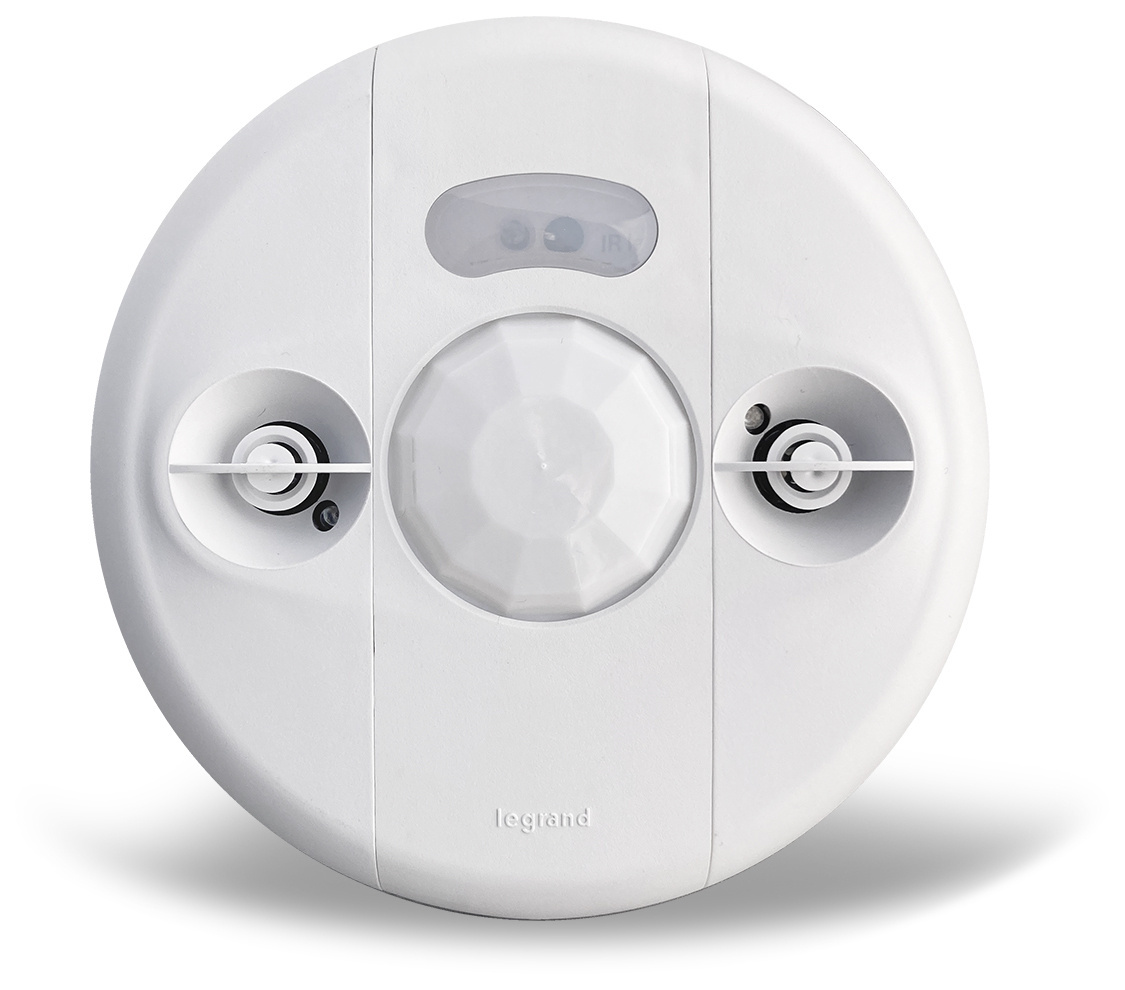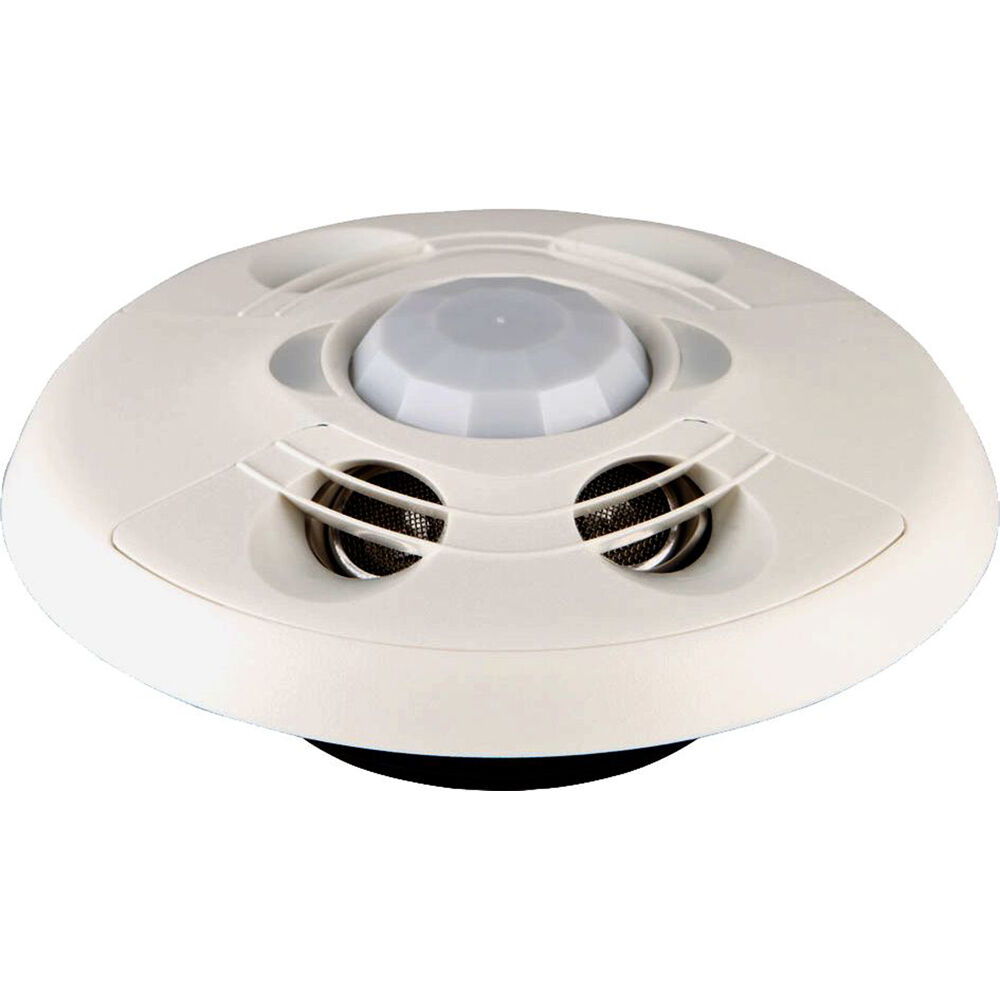Dual Technology Occupancy Sensors: Enhancing Efficiency and Security
Dual technology occupancy sensors are revolutionizing building automation by offering a more accurate and reliable way to detect occupancy. These sensors combine two different technologies, such as passive infrared (PIR) […]

Dual technology occupancy sensors are revolutionizing building automation by offering a more accurate and reliable way to detect occupancy. These sensors combine two different technologies, such as passive infrared (PIR) and ultrasonic, to overcome the limitations of single-technology sensors and provide a more comprehensive understanding of room occupancy.
By leveraging the strengths of both technologies, dual technology occupancy sensors offer numerous benefits, including improved energy efficiency, enhanced security, and increased comfort for building occupants. These sensors can automatically control lighting, HVAC systems, and other building functions based on real-time occupancy data, leading to significant cost savings and a more sustainable environment.
Introduction to Dual Technology Occupancy Sensors
Dual technology occupancy sensors are a type of sensor that combines two different technologies to detect the presence of people in a space. This approach enhances reliability and accuracy compared to single-technology sensors. They are commonly used in various applications, including lighting control, HVAC systems, and security systems.
Technologies Used in Dual Technology Sensors
Dual technology sensors typically combine two different technologies to achieve reliable occupancy detection.
- Passive Infrared (PIR): PIR sensors detect changes in infrared radiation emitted by warm objects, such as people. They are widely used in occupancy sensing due to their low cost and energy efficiency. However, they can be susceptible to false triggering from other sources of heat, like sunlight or moving objects.
- Ultrasonic: Ultrasonic sensors emit sound waves and measure the time it takes for them to reflect back. This technology is effective in detecting movement, regardless of temperature changes. However, ultrasonic sensors can be affected by objects that reflect sound waves, leading to false triggers.
- Microwave: Microwave sensors emit radio waves that are reflected by objects in the space. They are less sensitive to temperature changes and can detect movement through walls or other barriers. However, they are more expensive than PIR and ultrasonic sensors.
Applications of Dual Technology Occupancy Sensors
Dual technology occupancy sensors are widely used in various applications due to their ability to provide accurate and reliable occupancy detection.
- Lighting Control: Dual technology sensors can be used to automatically turn lights on and off based on the presence of people in a room. This helps to save energy and reduce lighting costs.
- HVAC Systems: These sensors can control HVAC systems to adjust temperature and ventilation based on occupancy. This can improve comfort and energy efficiency by reducing unnecessary heating or cooling.
- Security Systems: Dual technology sensors can be integrated into security systems to detect intruders. By combining two technologies, they can provide a more reliable detection system that is less susceptible to false triggers.
Advantages of Dual Technology Occupancy Sensors
Dual technology occupancy sensors offer a significant advantage over single technology sensors, particularly in applications where accurate and reliable occupancy detection is crucial. By combining two distinct sensing technologies, these sensors provide a more comprehensive and robust approach to identifying the presence of people in a space.
Improved Accuracy and Reliability
Dual technology sensors enhance accuracy and reliability by minimizing false positives and negatives. This is achieved by using two complementary sensing methods, which cross-verify each other to confirm occupancy. For example, a sensor that combines passive infrared (PIR) and ultrasonic technology can differentiate between movement and actual occupancy. PIR sensors detect changes in infrared radiation, while ultrasonic sensors measure the time it takes for sound waves to bounce back from objects. If both technologies detect movement or presence, it increases the confidence in the occupancy status. This dual-verification approach significantly reduces the likelihood of errors caused by factors like drafts, sunlight, or moving objects that might trigger single technology sensors.
Energy Savings and Efficiency
Dual technology sensors contribute to energy savings and efficiency by accurately detecting occupancy and controlling lighting and HVAC systems accordingly. By eliminating unnecessary energy consumption in unoccupied spaces, these sensors can significantly reduce energy bills. For instance, in an office building, dual technology sensors can automatically switch off lights and adjust the HVAC system when no one is present in a room, leading to substantial energy savings.
Enhanced Security
Dual technology sensors can also enhance security by providing a more reliable detection system for intrusion detection. By integrating both PIR and ultrasonic technology, these sensors can effectively identify unauthorized movement within a space. This increased sensitivity and accuracy can help to deter intruders and ensure the safety of occupants.
Working Principle of Dual Technology Occupancy Sensors

Dual technology occupancy sensors combine two distinct detection methods to enhance accuracy and reliability in determining room occupancy. This approach minimizes false triggers, improves energy efficiency, and provides a more comprehensive understanding of room usage patterns.
Detection Mechanisms of Dual Technology Occupancy Sensors
Dual technology occupancy sensors utilize two primary detection methods: passive infrared (PIR) and ultrasonic.
- Passive Infrared (PIR): PIR sensors detect changes in infrared radiation emitted by moving objects, primarily humans. They consist of a pyroelectric sensor that generates an electrical signal when exposed to variations in infrared radiation. The sensor’s field of view is divided into zones, and movement within these zones triggers the sensor.
- Ultrasonic: Ultrasonic sensors emit high-frequency sound waves that reflect off objects in the room. By analyzing the time it takes for the sound waves to return, the sensor can determine the presence of objects within its range. These sensors are less sensitive to temperature changes and are less prone to false triggers caused by drafts or sunlight.
Combining Data from Different Technologies
Dual technology occupancy sensors analyze data from both PIR and ultrasonic sensors to make occupancy decisions. The sensors typically employ a logic algorithm that considers the following factors:
- Signal Strength: The intensity of the PIR signal and the strength of the ultrasonic echo indicate the presence and size of an object.
- Movement Pattern: The direction and speed of movement detected by the PIR sensor can differentiate between human movement and other disturbances.
- Time Delay: The sensor incorporates a time delay to avoid false triggers from brief movements or transient events.
Decision-Making Process Flowchart
The following flowchart illustrates the decision-making process of a dual technology occupancy sensor:
[Flowchart image description]: The flowchart starts with a single input node labeled “Sensor Activation”. It then branches into two separate paths representing PIR and Ultrasonic detection. Each path has a decision node labeled “Signal Strength” and “Movement Pattern”. Based on the decision, the flow continues towards a “Time Delay” node. Finally, the flow converges at a “Occupancy Decision” node, where the sensor determines whether the room is occupied or not.
Dual technology occupancy sensors offer a reliable way to monitor space utilization, but they can sometimes be intrusive. If you’re looking for a more discreet solution, consider the quiet technologies halo , which uses passive infrared technology to detect movement without the need for a loud, active sensor.
This approach can provide a similar level of occupancy data without disrupting the environment, making it ideal for spaces where quiet is paramount.
Installation and Configuration of Dual Technology Occupancy Sensors

Installing and configuring dual technology occupancy sensors requires careful planning and execution to ensure optimal performance and accurate detection. This involves selecting the right location for the sensor, proper installation, and calibration to ensure it functions correctly and efficiently.
Sensor Location Selection
The location of the sensor is crucial for accurate occupancy detection.
- Sensors should be placed in locations with minimal obstructions, such as furniture or walls, to ensure the sensor’s field of view is not blocked.
- Consider the layout of the room and the typical movement patterns of occupants to determine the optimal placement for maximum coverage.
- Avoid placing sensors in areas with high levels of ambient light, such as near windows, as this can interfere with the sensor’s performance.
- Take into account the presence of HVAC vents, which can cause fluctuations in temperature and potentially trigger false activations.
Sensor Installation
Proper installation is essential for reliable sensor operation.
- Follow the manufacturer’s instructions carefully, including the recommended mounting height and distance from walls or other objects.
- Use appropriate mounting hardware to secure the sensor firmly in place, preventing any movement or vibration that could affect performance.
- Connect the sensor wiring to the control system or lighting circuit, ensuring proper polarity and secure connections.
- Consider the location of the sensor’s power source and ensure it is accessible for maintenance or replacement.
Sensor Calibration and Adjustment
Calibration and adjustment are critical for optimizing sensor performance.
- After installation, the sensor should be calibrated to account for the specific environment and conditions where it is deployed.
- This involves adjusting sensitivity settings, time delays, and other parameters to minimize false activations and ensure accurate detection.
- The manufacturer’s instructions should provide guidance on the recommended calibration process and settings for different environments.
- Regular calibration and adjustment are essential to maintain optimal performance and compensate for changes in environmental conditions or sensor aging.
Sensor Wiring and Connection
The sensor should be connected to the control system or lighting circuit.
- Ensure that the wiring is properly routed and secured to prevent damage or interference.
- The connection should be made according to the manufacturer’s instructions, paying attention to polarity and other specifications.
- The sensor should be connected to a power source that meets its requirements.
- The connection should be tested to ensure that the sensor is functioning properly.
Future Trends in Dual Technology Occupancy Sensors
Dual technology occupancy sensors are constantly evolving, incorporating new technologies and functionalities to improve their accuracy, efficiency, and integration with smart building systems. This section delves into emerging trends that are shaping the future of these sensors.
Integration with Smart Building Systems, Dual technology occupancy sensor
The integration of dual technology occupancy sensors with smart building systems is a key trend, enabling greater automation and energy efficiency. These sensors can communicate with building management systems (BMS) to control lighting, HVAC, and other systems based on real-time occupancy data. This integration allows for dynamic adjustments to building conditions, reducing energy consumption and improving occupant comfort.
Closure

Dual technology occupancy sensors are a powerful tool for creating smarter and more efficient buildings. Their ability to accurately detect occupancy, combined with their versatility and ease of integration, makes them an ideal solution for a wide range of applications. As technology continues to advance, we can expect to see even more innovative applications of dual technology sensors in the future, further enhancing our built environment.





